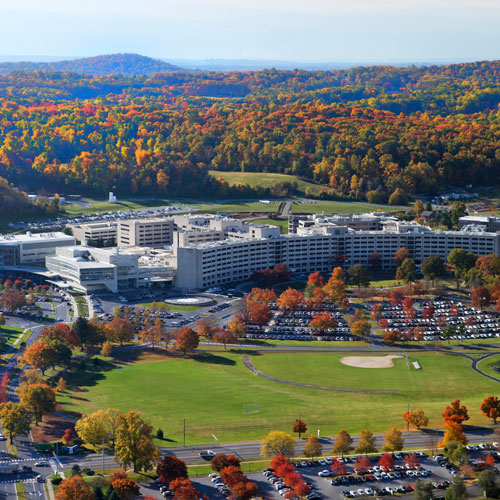Last year, SunPower, the San Jose, California-based solar technology and services company, turned 30 years old. Even apart from its resiliency, the company has reason to celebrate. In the past three decades, SunPower has carved out a name for itself in the renewable energy space, and has emerged as a top global provider of innovative solar power technology for homes, businesses, government agencies, schools, and utility companies.
“We’re changing the way our world is powered,” says Robert Vinje, SunPower’s vice president of engineering, procurement, and construction.
Today, SunPower has more than five GW of residential, commercial, and utility solar assets deployed around the world. As customers look for ways to further leverage their solar investments, SunPower is honing its focus on energy management, battery storage solutions, and other initiatives in order for solar power users to better control electricity costs and store energy for use when the sun doesn’t shine.
“Thirty years ago, SunPower stood out as an innovator by bringing to market the world’s most efficient solar cell,” Vinje says. “Today, we still offer the most efficient solar technology commercially available, and we are continuing to innovate to ensure that we’re helping customers maximize the energy and savings their solar power systems generate.”
Stateside, the company has been making headlines with a series of solar power plants it has completed or has under construction. In addition to a positive environmental impact, Vinje says solar plants also provide an economic boost to their surrounding areas.
Solar Star Project
Kern and Los Angeles Counties, California
With more than 1.7 million high-efficiency SunPower panels, Solar Star is the largest operating solar photovoltaic power plant in the world. It spans a six-by-four-mile area in the Mojave Desert, colocated in both Kern and Los Angeles counties.
Robert Vinje oversaw the team that executed every detail of Solar Star’s construction.

“For all of SunPower’s experience building solar power plants around the globe, it was fun to have a hand in building the ‘world’s largest’ something,” he says. “Seeing it go from an empty field to a massive, Discovery Channel-worthy project was incredibly rewarding.”
Power plants using solar photovoltaic technology are faster to install than plants that generate other kinds of power, but the rate of construction at Solar Star was even faster than most solar power plants. The first solar module was installed in March 2013, and the last was installed in 2015, about six months ahead of schedule, Vinje says. During those 18 months, the project employed about 650 workers, and generated an estimated $500 million in regional economic impact. Additionally, according to estimates from the Environmental Protection Agency, electricity generated from the projects will displace about 570,000 tons of carbon dioxide per year—the equivalent of removing more than 2 million cars from highways over 20 years.
Today, Solar Star delivers 579 MW of energy to California’s electricity grid. Southern California Edison purchases the electricity from these projects under long-term power purchase agreements.
Quinto Solar Plant
Merced County, California
Mega projects such as Solar Star are exciting, but medium size plants such as the 135-MW Quinto Solar Plant in Merced County, which generates electricity for about 40,000 homes, are far more plentiful.
“As the solar industry matures, solar plants of the scale of Quinto, or smaller, are the norm,” Vinje says.

The size of a power plant is often limited by the amount of capacity available on nearby transmission lines. Vinje uses car parking as an analogy—if you drive an SUV, city parking is hard to come by, but a compact car will fit “pretty much wherever you want.”
The Quinto project was also one that required additional attention to the environmental impact of the project.
Since the company started building solar power plants in 2004, SunPower has been mindful of sustainable building practices. In fact, the company developed an innovative approach to solar power plant development that it calls “Light on Land.” It’s an approach that minimizes the environmental impact of large-scale solar power systems by reducing disturbances to land and natural resources while maximizing the renewable energy they generate. Some examples of its impact include selecting sites previously disturbed by human activities such as agriculture or ranching, and improving sites when possible by restoring land and soil during construction and operation of the plant.
“Solar can easily coexist with the wonders of nature,” Vinje says.
Coming soon:
Henrietta Solar Project
Construction is currently underway on the 102-MW Henrietta Solar Project in Kings County, California. Construction is scheduled to be finished by the end of 2016, Robert Vinje says.

This 670-acre project will generate power for Pacific Gas and Electric customers. Like most of the company’s utility projects, SunPower is installing its Oasis Power Plant technology at the site. Oasis is a proprietary, modular solar power block that enables speedy construction and long-term high performance.
Once completed, the Henrietta project will generate electricity for more than 22,000 homes. The EPA estimates that the plant will offset the annual production of about 128,000 tons of carbon dioxide emissions; the equivalent of removing more than 614,000 cars from California’s roads.
“SunPower offers turnkey solar power plant services, from manufacturing our own world-record efficiency solar panels and Oasis sun tracking systems, to designing and constructing the plants, to long term operations and maintenance,” Vinje says. “For SunPower, this is our wheelhouse, this is what we do day in and day out, around the globe.”
“For all of SunPower’s experience building solar power plants around the globe, it was fun to have a hand in building the ‘world’s largest’ something. Seeing it go from an empty field to a massive, Discovery Channel-worthy project was incredibly rewarding.”
Robert Vinje
VP, Engineering, Procurement, & Construction


